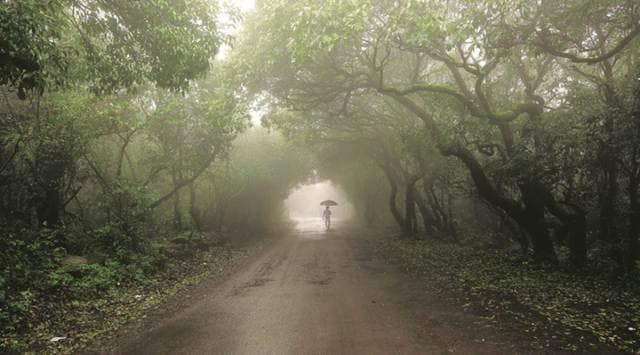- India
- International
Seven new species of diatoms discovered from Western Ghats
Diatoms, which generate nearly 25 per cent of global oxygen, are commonly found in streams, rivers, lakes and seas.
 What makes the discovery from Western Ghats significant is that the closest relatives from this genus can be traced to Antarctica even today. (Express File Photo by Prashant Nadkar)
What makes the discovery from Western Ghats significant is that the closest relatives from this genus can be traced to Antarctica even today. (Express File Photo by Prashant Nadkar)SEVEN new species of sub-aerial diatoms, a kind of algae, have been discovered from some areas of Western Ghats by city-based scientists from the Agharkar Research Institute (ARI).
Diatoms, which generate nearly 25 per cent of global oxygen, are commonly found in streams, rivers, lakes and seas. In simple terms, every fourth breath that we take is produced by diatoms, which are efficient in the carbon fixation process.
In a recently published study led by Balasubramanian Karthick, diatoms from genus Luticola were found growing on wet walls close to water bodies near Kaas plateau in Satara, Varanda ghat near Bhor and Yana caves in north Karnataka.
What makes the discovery from Western Ghats significant is that the closest relatives from this genus can be traced to Antarctica even today. This is the first time in two centuries that a discovery of Luticola peguana, found during the 1800s in Bengal, has been found in the Western Ghats.
On the missing links between the diatoms found along the Western Ghats and Antarctica, the ARI scientist said, “There could be a possibility that these species share a common ancestry, but detailed studies will be needed to establish the same… there is not enough scientific evidence of these species in other in-between areas.”

Across the world, there are 200 known species under this genus. Of these, about 20 per cent is endemic to Antarctica. The Y species of genus Luticola is known to exist and be endemic to Southeast Asian countries such as Thailand, Vietnam and Cambodia.
Many large living organisms are known to thrive in varying habitats across geographical boundaries. “In a similar manner, even micro-organisms grow in diverse habitats, but very few among the smaller creatures have been identified so far, ” said Karthick.
This collaborative study between researchers of ARI, University of Colorado, University of Michigan and Bowling Green State University, published in European Journal of Phycology, adds seven more species from India.
Apr 25: Latest News
- 01
- 02
- 03
- 04
- 05







































